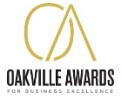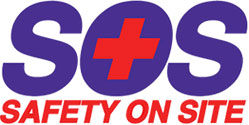Have a question about our first aid & CPR courses? Please see our Frequently Asked Questions below.
First aid is the immediate care one gives to an ill or injured person until medical care can be obtained. The First Aider’s role includes:
- recognizing the emergency
- calling EMS/911
- reacting according to your skills, knowledge, and comfort level
In a standard or emergency first aid class, students learn skills and knowledge to handle emergencies such as:
- bleeding
- heart attack and stroke
- anaphylaxis
- head, neck and spinal injuries
- diabetic treatment
Having certification in first aid helps you prepare for these emergencies, and provide assistance and care until an advanced medical team arrives.
CPR stands for cardiopulmonary resuscitation. The term cardio refers to the heart, and pulmonary refers to the lungs. CPR is the same as Basic Cardiac Life Support (BCLS).
CPR is a combination of breathing and chest compressions. Performing CPR increases a cardiac arrest casualty’s chances of survival by keeping the brain supplied with oxygen until the person receives advanced medical care.
CPR alone is not enough to help someone survive cardiac arrest. Advanced medical care is needed immediately, and includes the use of medications or a defibrillator.
With proper CPR training, whether standalone or combined with a standard or emergency first aid course, can help make a difference in an emergency until help arrives.
CPR is always taught with first aid. Although it is very valuable to learn how to help with a wound or a sprained ankle, none of that matters if the person isn’t breathing or is having a heart attack. The most important assessment/treatment comes first.
AED stands for Automated External Defibrillator. An AED sends an electric shock through the chest to the heart to start the heard beating effectively again. Defibrillation given as soon as possible is the key to helping some people survive cardiac arrest.
All of our first aid & CPR classes include AED certification, and teach you skills to handle situations such as:
- choking situations
- respiratory distress
- respiratory arrest (when breathing stops)
- cardiac arrest
CPR Level A is CPR and choking techniques for adults. This course is recommended for those who need to know how to assist with respiratory or cardiac emergencies affecting a person older than eight years of age. The course is intended for layperson (general public) first aiders, workplace first aiders, Can-Fit-Pro certifications, and others.
CPR Level C is CPR and choking techniques for adults, children, and infants. 2-person CPR for adult and child is also taught at this level. This is recommended for those who need to know how to assist with respiratory or cardiac emergencies affecting persons in different age groups.
The course is intended for layperson rescuers, workplace safety teams, lifeguards, police, ECE and daycare providers, PSWs, security guards, and other groups.
CPR Level BLS is CPR and choking techniques for adult, child, and baby victims at a Health Care Provider or Basic Life Support level. This course provides training for the recognition of and initial intervention or treatment given by health care responders to a patient suffering from cardiac and respiratory arrest. Skills include advanced circulation check, rescue breathing, use of a bag valve mask (BVM), working in a high-performance team.
This course is intended for doctors, nurses, paramedics and allied Health Care Professionals.
CPR BLS can be combined with a standard or emergency first aid course.
You will receive your Red Cross certificate directly from the Red Cross by email within 5-7 days of your course completion date. If you are completing a Lifesaving Society course, your certificate will be mailed out to you directly from the Lifesaving Society.
All of our first aid and CPR courses include certification from the Canadian Red Cross Society or The Lifesaving Society. The certificates meet Canadian Occupational Safety and Health regulations, Ontario’s Workplace Safety and Insurance Board requirements, and are recognized by employers, schools, and safety councils throughout Canada.
Although you took a course already, if your card is not current (already expired) it is no longer valid and you will need to take the full course.
Based on our conversations, security guards seem to want Emergency First Aid. For ECEs or PSWs, most schools and employers are requiring Standard First Aid. However, it is always good to check with your school or employer. If you are still a confused PSW or RPN, please contact us for more details.
First aid and layperson CPR certificates are valid for three years, after which you’ll need to take a recertification course. CPR BLS is valid for one year. You should also note that some employers require you to retrain every year.
Please click here for all of our payment refund and privacy policies.
We’re proud to offer some great online WSIB safety courses. Click here to view our catalogue.
Have a question that isn’t answered here? Ask us at 905-844-9813, or email us today!






